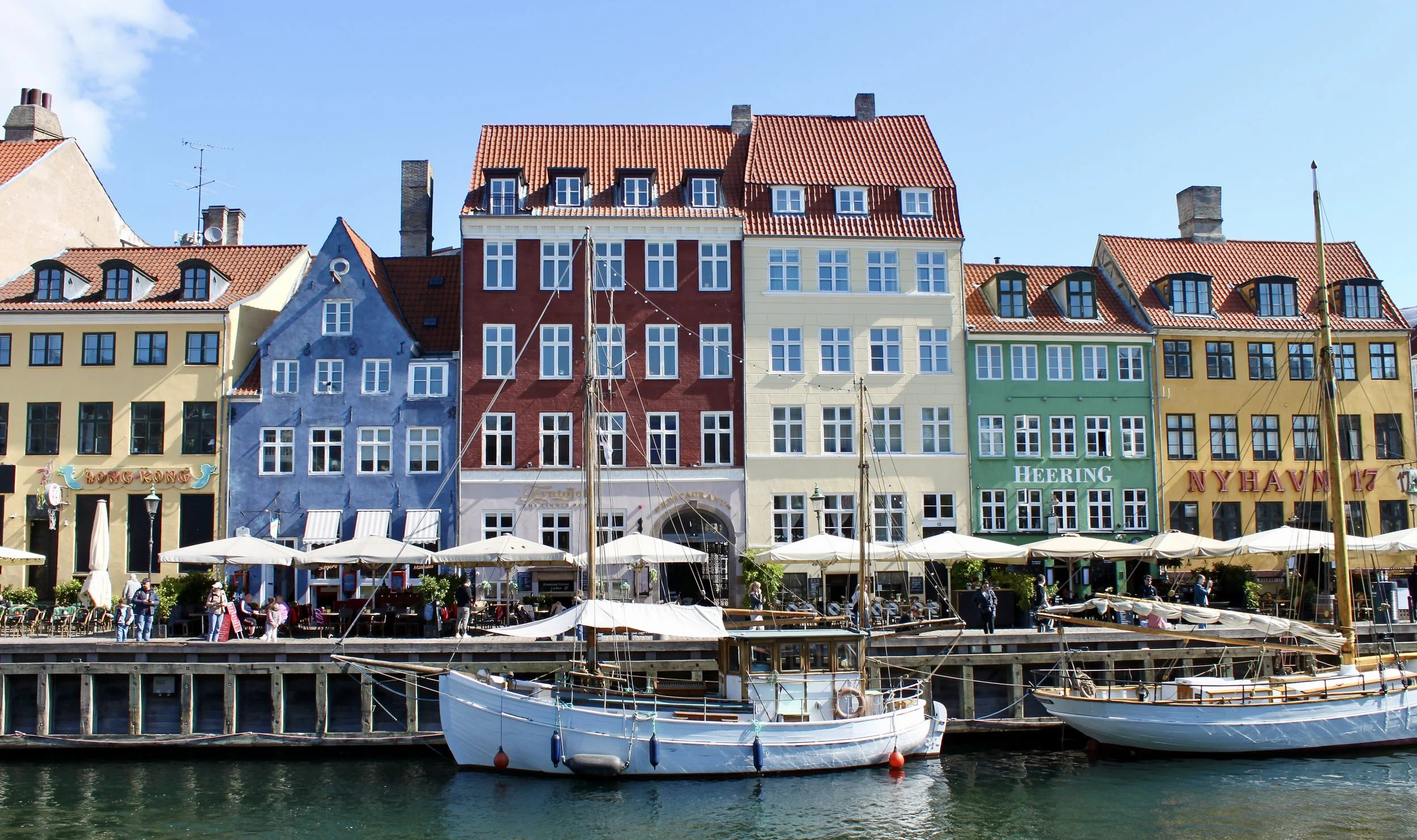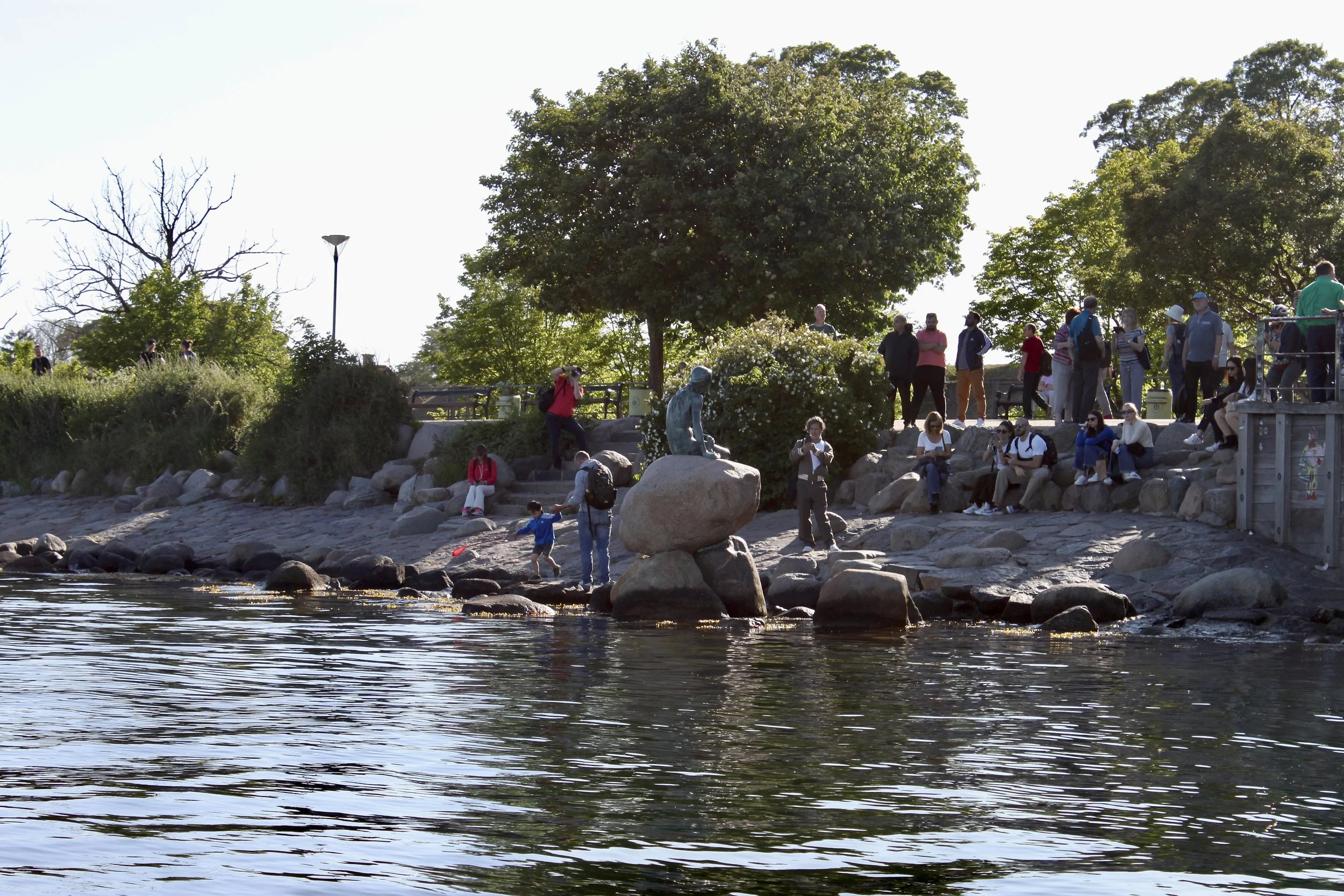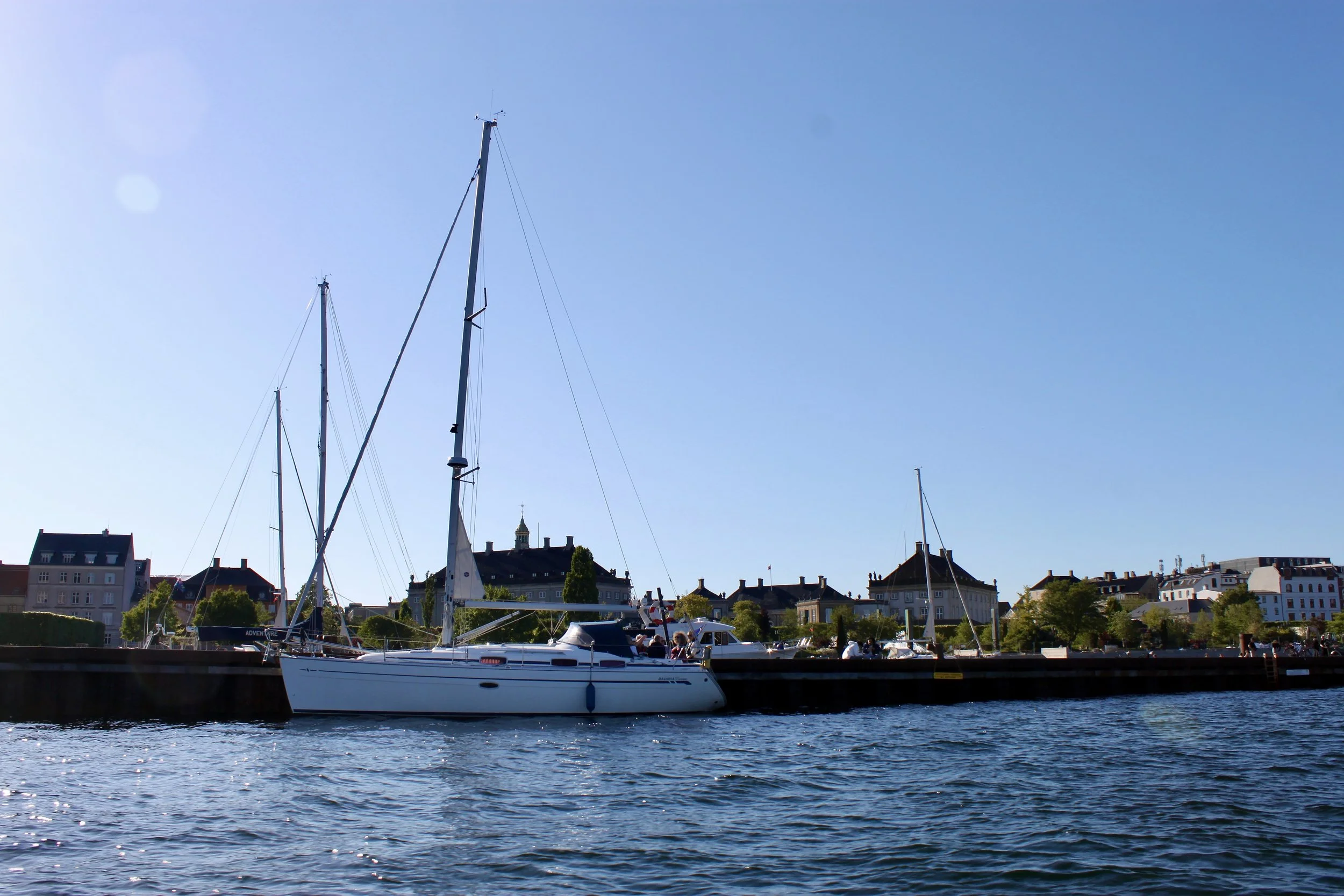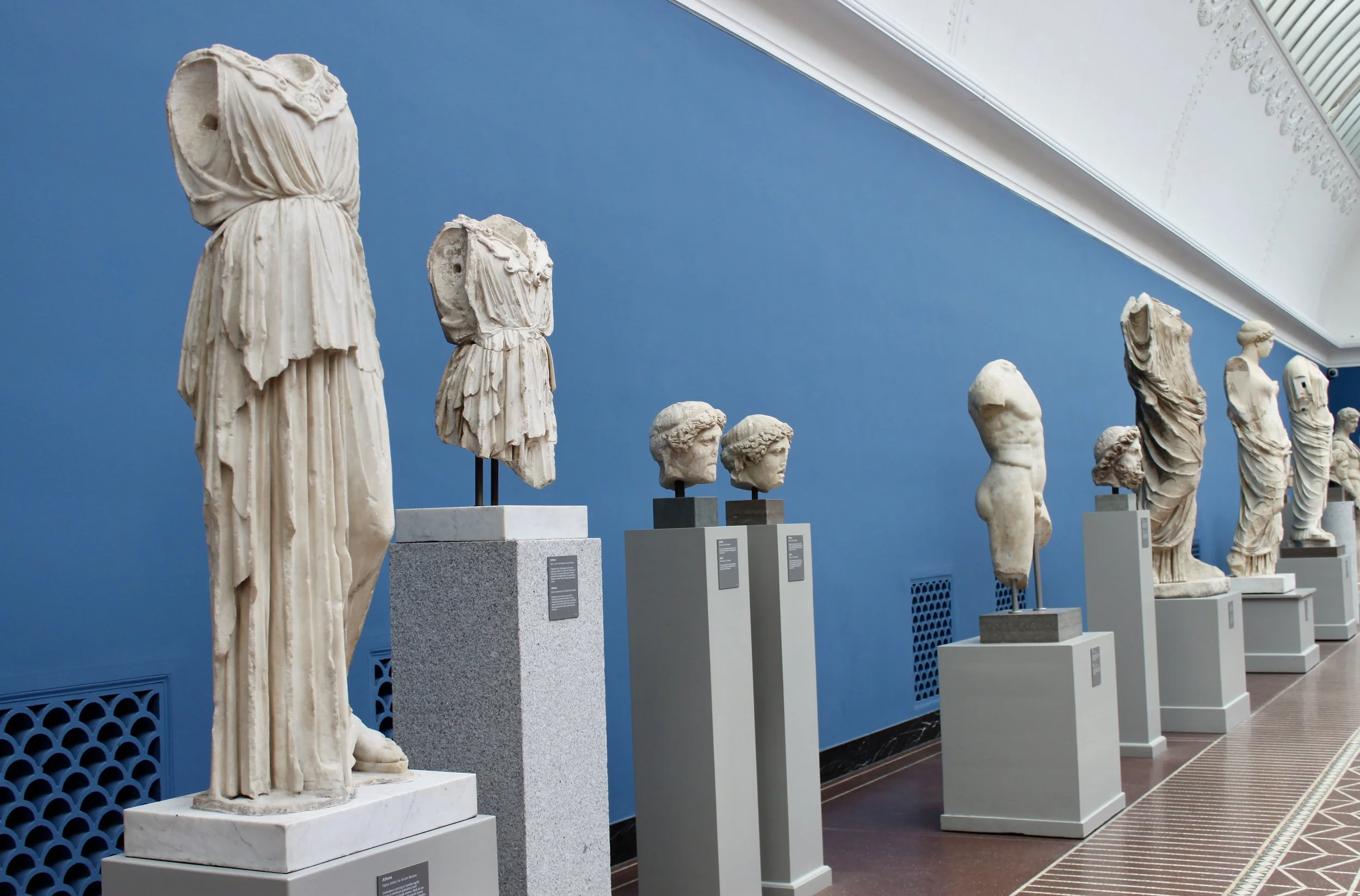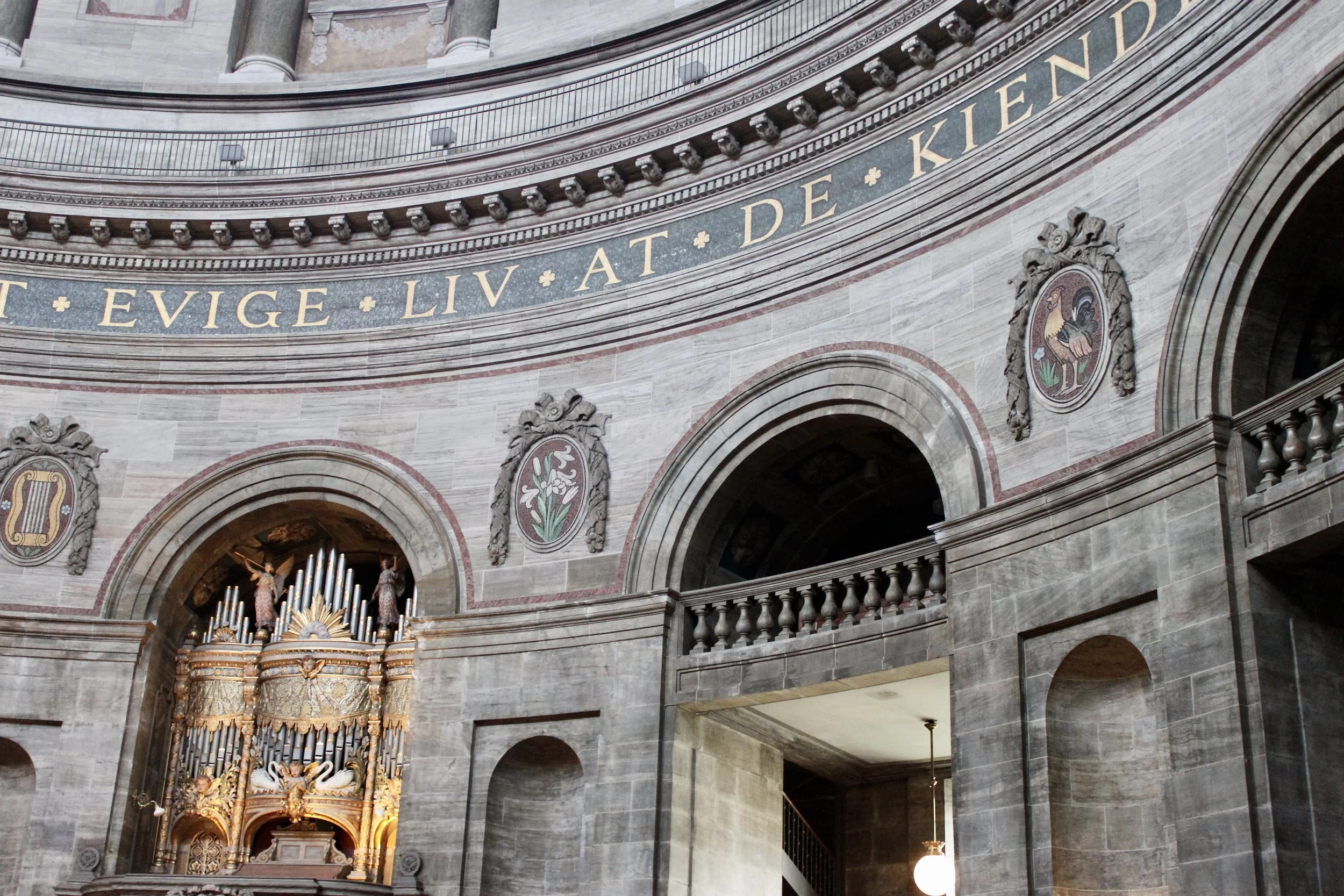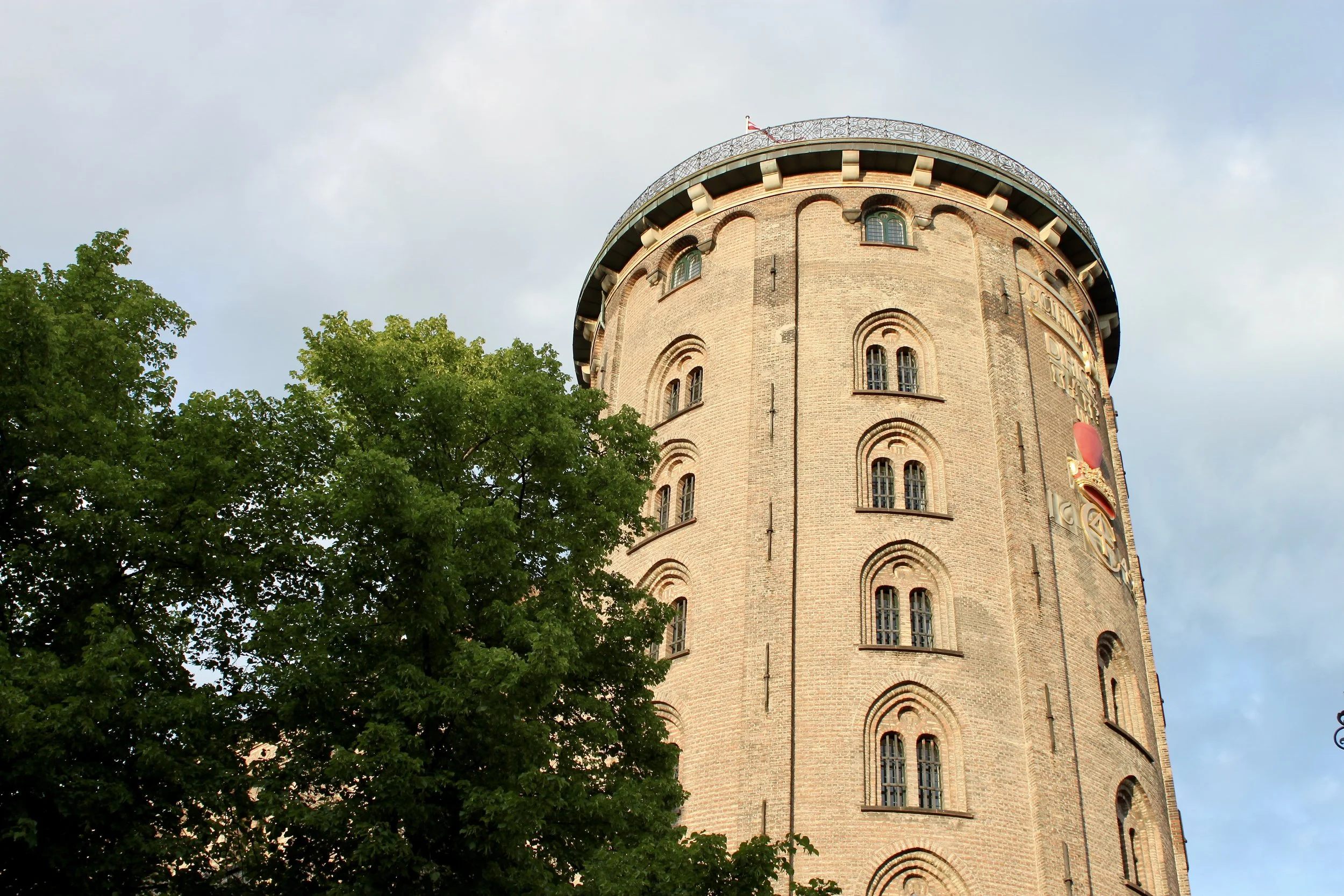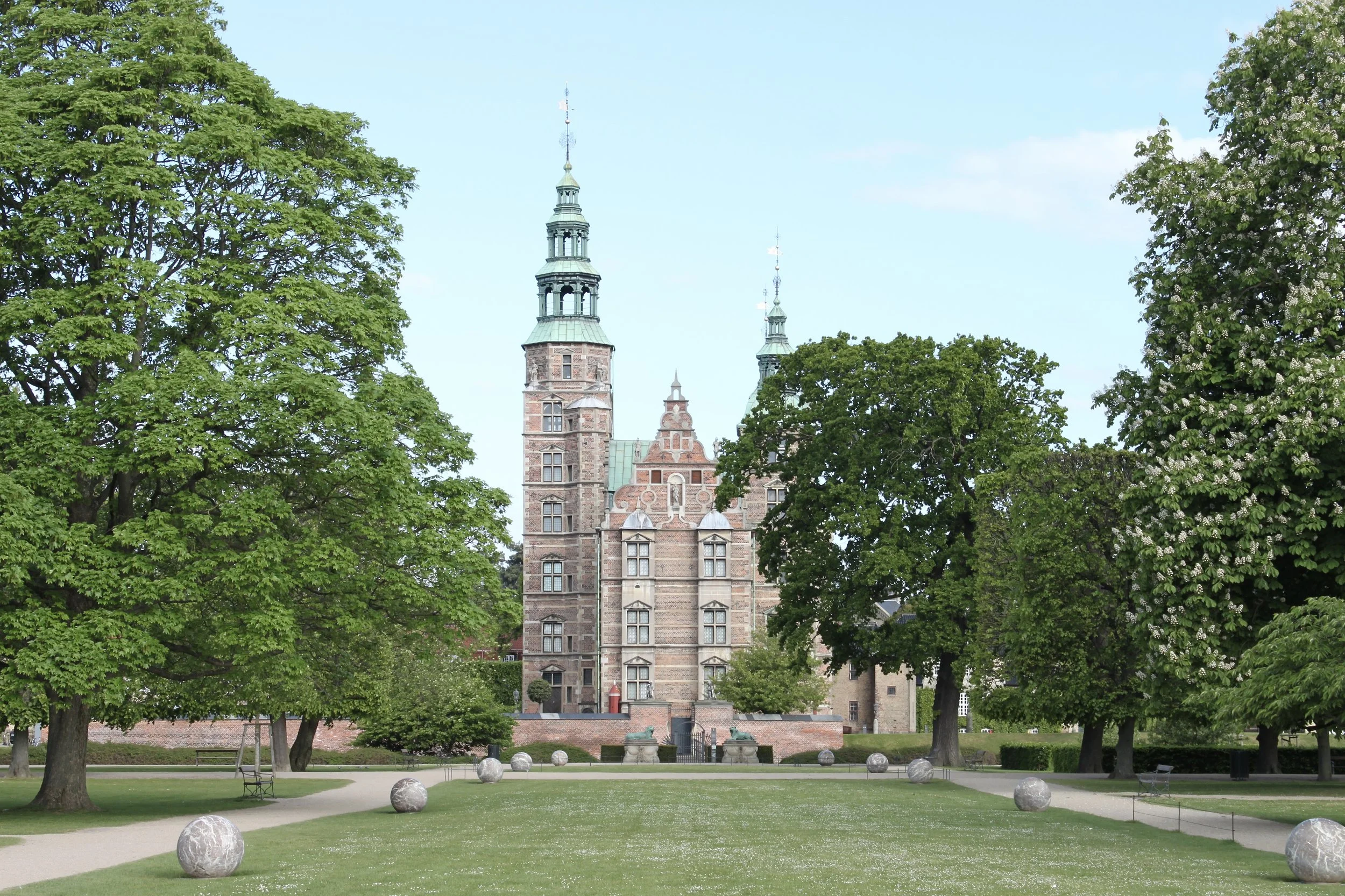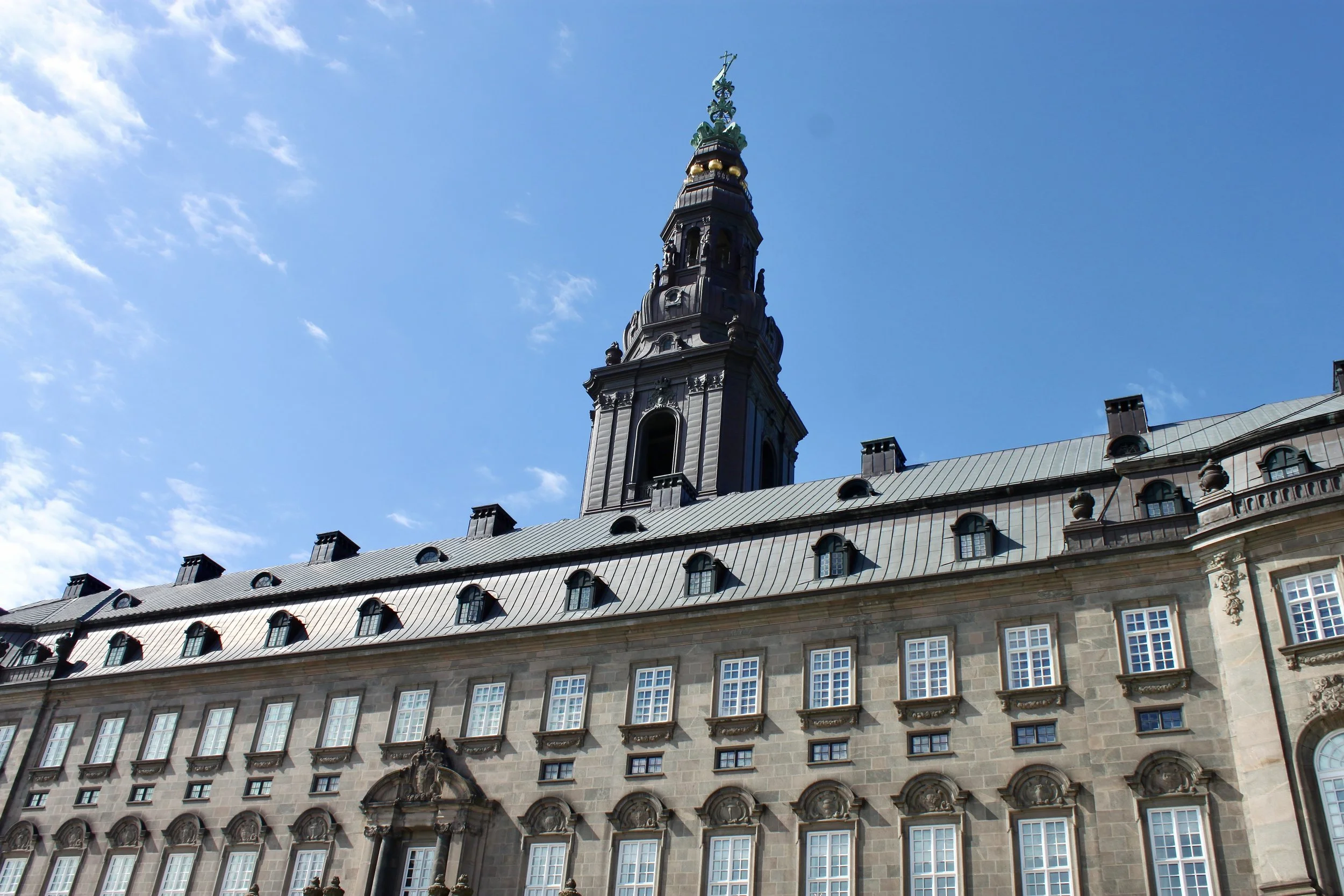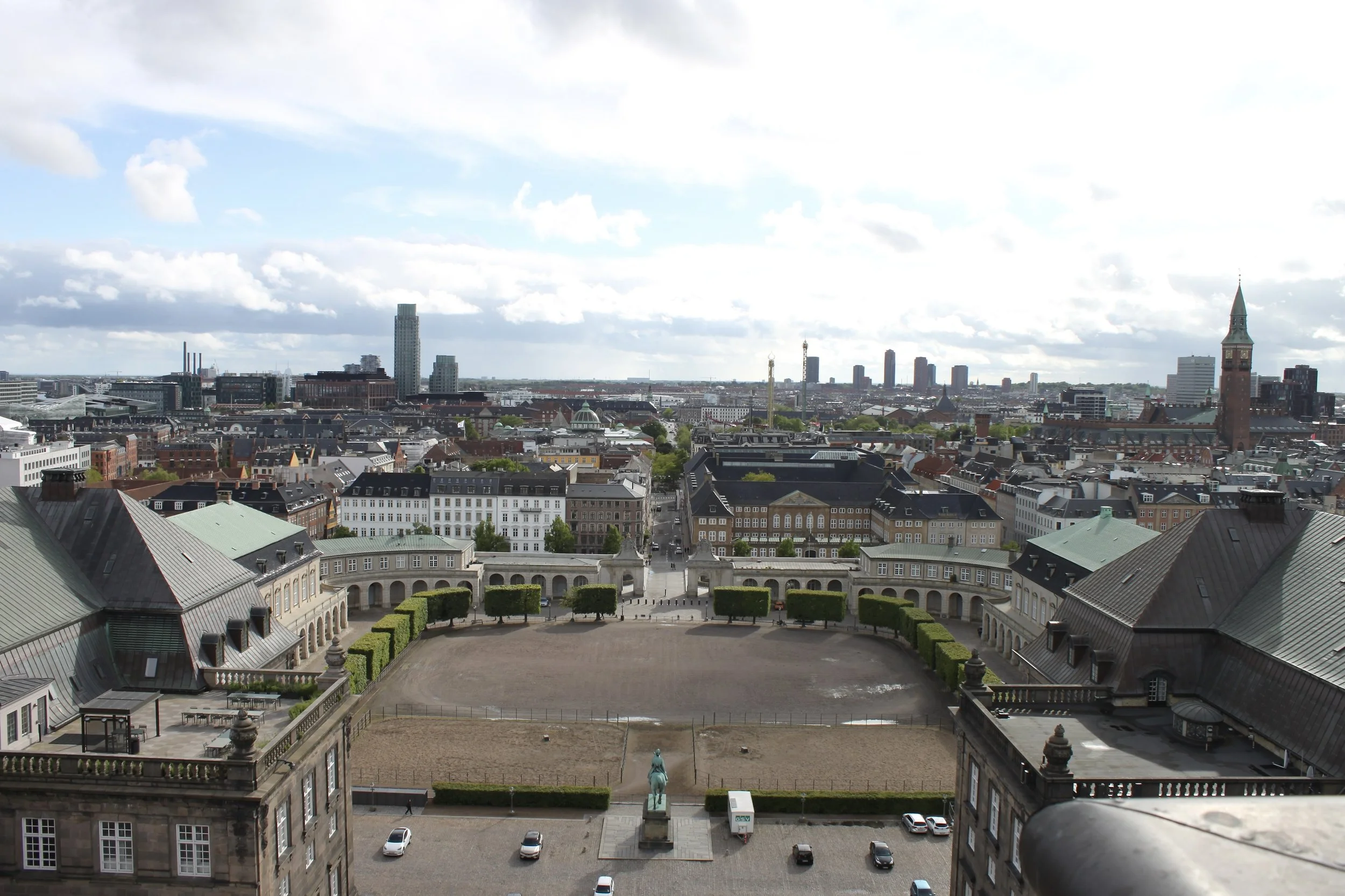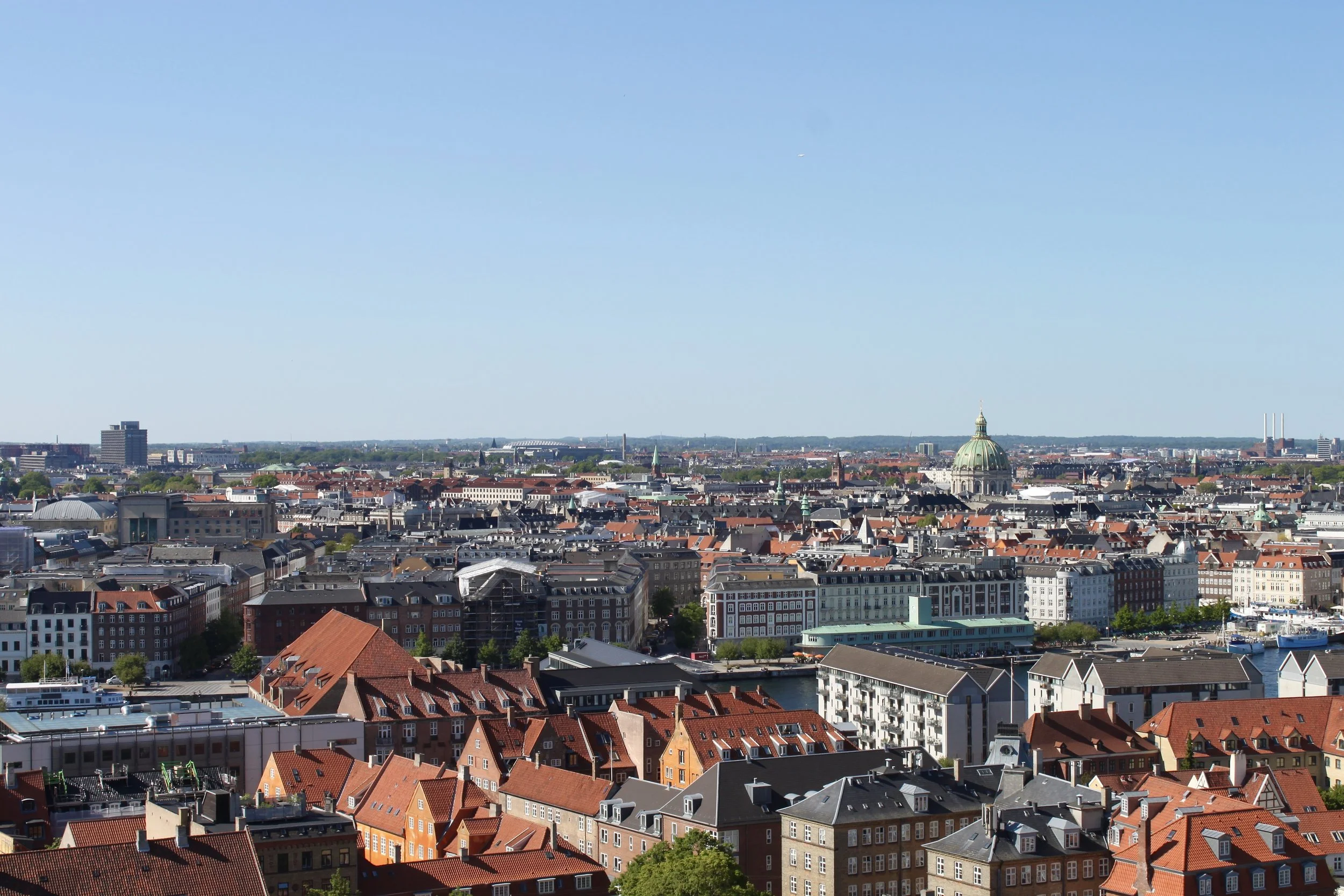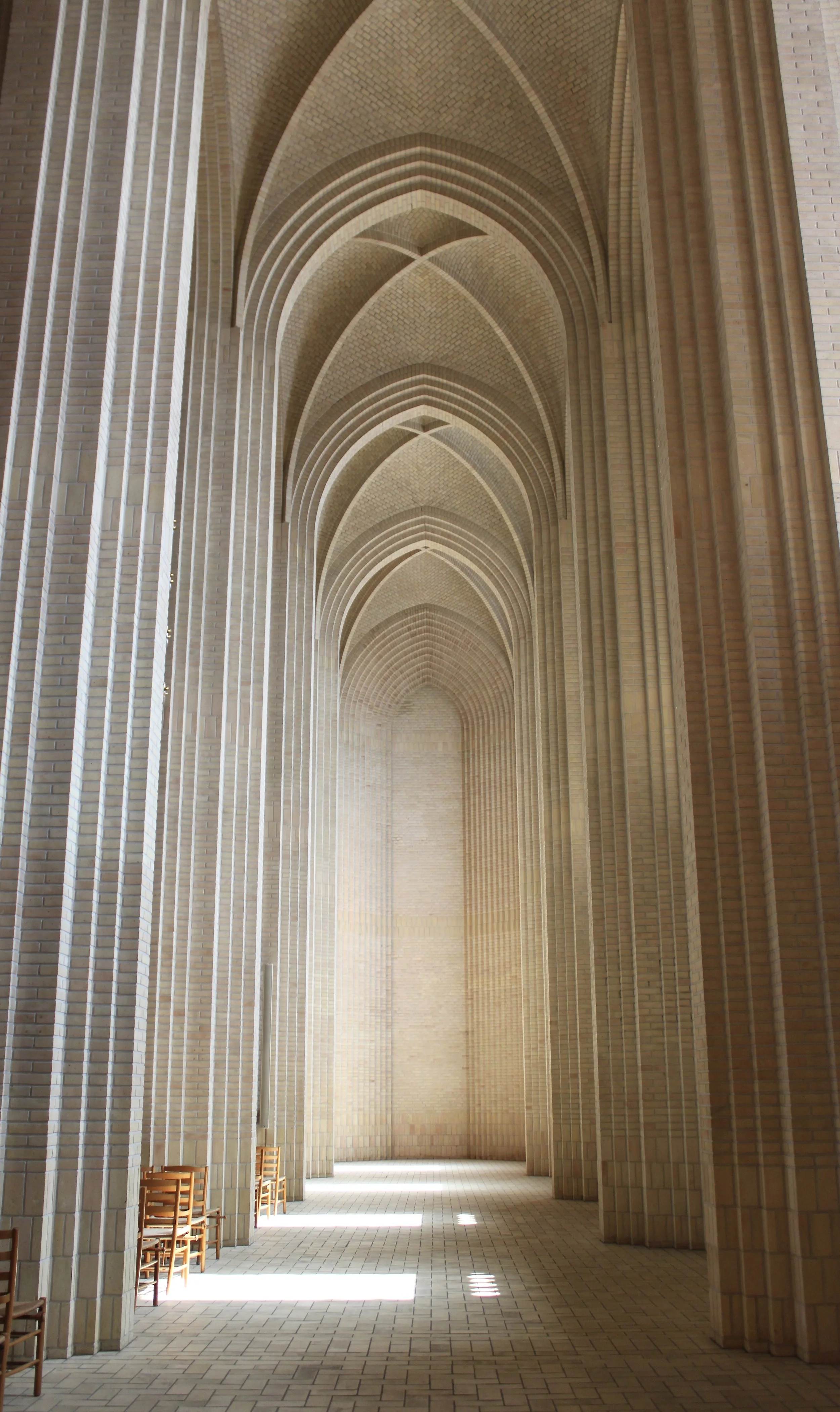COPENHAGEN MUST SEES
There is no shortage of things to do and see in Copenhagen, the capital of Denmark. Originally a fishing village, Copenhagen is now home to a number of Michelin star restaurants, gorgeous water views, cool design shops, one of the oldest amusement parks in the world, and more. While there are countless places to explore, here are the must sees if you are coming to Copenhagen for the first time:
Nyhavn Harbour
If you have seen one photo of Copenhagen, it is probably of Nyhavn Harbour. Vibrant colorful houses line the port, boats can be seen docked along the canal, and restaurant chairs spill out onto the sidewalk. Get here as early as you can to avoid the big groups of people that flock to this central part of town!
Nyhavn Harbour
The Little Mermaid Statue
Hans Christian Andersen, a Danish author who actually lived in three different Nyhavn houses, wrote the iconic fairy tale The Little Mermaid. Since its first publication in 1837, the story has been adapted to the stage, screen, and more. One particular rendition was a ballet performed at the Royal Danish Theatre, where a brewer by the name of Carl Jacobsen fell in love with the famous mermaid, as performed by ballerina Ellen Price. Jacobsen commissioned sculptor Edvard Eriksen to create a sculpture of the mermaid. While the statue is a beloved tourist attraction, she has been vandalized quite a bit. Headless, painted, one-armed; she has gone through the ringer. Unfortunately, the same can be said of her fate at the end of the original fairy tale, but just like Disney’s version, this statue always receives a fairy tale ending, and is constantly restored to her original glory for all to see! Keep in mind the statue is super small with a huge crowd, so my favorite way to see her is on a canal cruise around Copenhagen.
The Little Mermaid, as seen from the water
Canals
One of the best ways to explore Copenhagen is by boat, on a canal tour. I like the one-hour canal cruises that Stromma offers, where you can see iconic sights like the Little Mermaid statue and Amalienborg Palace. Be sure to choose a live-guided tour and enjoy your trip around Copenhagen!
views from the water
Ny Carlsberg Glyptotek
This art museum, more commonly known as Glyptoteket, was founded by the same man who fell in love with the mermaid at the Royal Danish Theatre mentioned above! Since its founding in 1897, the gallery has been recognized for its marble sculptures and winter garden. When you enter, you will be greeted with the latter – a garden packed with palm trees, a fountain, and pond. To the right of the garden, you have the option of taking a break at the museum’s café or delighting in the gift shop. While the museum is not the hugest, it houses impressive collections of Egyptian, Greek, and Roman art as well as Danish and French art from the 19th and 20th centuries. I highly recommend a visit!
Ny Carlsberg Glyptotek
Frederik’s Church
Frederik’s Church was originally started in 1749. While the initial plans for the church included copious amounts of marble, the final construction wound up using other materials due to budget constraints. However, the church is no less grand because of its use of limestone and sandstone, and the church is even widely known as the “Marble Church” as a call back to the original vision. The round interior, the Rococo architecture, and the copper dome are my favorite aspects of this stunning Evangelical Lutheran church. At certain designated times, you can even walk up the dome to enjoy panoramic views of the city. Before you visit, be sure to check if the church is open to the public, as it is extremely popular to get married there!
Frederik's Church
Round Tower
This tower, built in 1637, is a perfect way to see the city of Copenhagen from above. But unlike traditional landmarks that have winding stairs or elevators to get to the top, there is only one way up this tower: the Snail Passage. This unique walkway is an ascending spiral ramp that winds 7.5 times around the tower’s hollow core. Once you get to the top of the passage, you are met with narrow stairs that bring you to the viewing platform. The stairs are so narrow that there is actually a traffic light system that lets you know when it is okay to ascend and descend. This way, there aren’t too many people on the stairs at the same time. You can look out at the city or perhaps look up at the sky, as the Round Tower has Europe’s oldest functioning observatory.
the Round Tower
Rosenborg Castle
Four Danish kings have resided in this castle, the first being Christian IV, who had the structure erected in the early 1600s. You can see his audience rooms as well as his bedchamber, where he passed away, in 1648. The gardens were also laid out during his reign, and are a focal point of the center of Copenhagen today. The gardens are absolutely stunning, and free to visit. While a ticket is required to access the interior of Rosenborg Castle, it is well worth it. Specifically, you have the opportunity to see not only the coronation thrones, but also the Danish crown jewels. I really enjoyed the furniture, the sumptuous ultra-decorated walls, and the overall aesthetic of Rosenborg Castle.
Rosenborg Castle
King’s Garden
The garden mentioned above as part of Rosenborg Castle is called the King’s Garden or Rosenborg Garden. While these grounds were originally restricted to royal use, they are now free for anyone who wants to visit! On a beautiful sunny day, you can see people enjoying picnics, tanning, and riding their bikes. Don’t miss the statue of Hans Christian Andersen, the rose garden, and the hedged gardens on the side of the castle.
King’s Garden
Amalienborg Palace
Amalienborg Palace is another royal structure in the heart of Copenhagen, and is actually the current royal residence. Time your visit around the changing of the guards, which happens in front of Amalienborg in the palace square. Every day, The Royal Life Guard marches from the barracks by Rosenborg Castle through the streets of Copenhagen to Amalienborg. The guards arrive to Amalienborg Palace at noon, and then the changing of the guards begins! The size of the guard and musical support depends on who is in residence at Amalienborg Palace at the time. When we were there, the guard was small but stately, and the crowd was very respectful. I was impressed that no railings had to be used, as everyone lined up exactly how the police instructed. The police even handed out little mementos to children! Once the changing of the guard is over, head inside the palace. Here you can visit the Amalienborg Museum, where you can view private interiors and an exhibit on the monarchy today. (I myself preferred the interior of Rosenborg Castle to that of Amalienborg Palace.)
Amalienborg Palace
Christiansborg Palace
While Amalienborg Palace is the current royal residence, Christiansborg Palace served as the Royal Palace up until 1794. Today, it still holds importance, as it houses the Danish Parliament, ruins under the palace, royal reception rooms, and a tower that is open to the public to take in sweeping views of the city. As a germaphobe myself, I was impressed when we were instructed to put booties on over our shoes as we entered the palace. The rooms are vast and commanding, and if you arrive just an hour before closing, you pretty much have the palace to yourself. I particularly liked the magnificent oil painting on canvas of Christian IX of Denmark and his family, painted in 1886.
Christiansborg Palace
Christiansborg Palace Tower
While Christiansborg Palace tower is of course a part of the former royal residence, it is free to enter and you do not need to reserve a timeslot to access it. However, as the Danish Parliament is housed here, it is necessary to go through metal detectors and any bags you have are screened. Once you go through the proper checks, you are well on your way to panoramic views of the city! While many structures require you to walk up many steps to enjoy beautiful city views, all you need to do is hop two elevators to get to the top of Christiansborg Palace tower. Please note that there are a couple of steps at the very top before you head out to the viewing platform.
views from Christiansborg Palace Tower
Church of Our Savior
Another structure that provides great views of the city (and my favorite one at that) is Church of Our Savior. This baroque church has an external spiral winding staircase that is accessible to the public (if you dare), offering my favorite 360-degree views of Copenhagen. But this view comes at a cost – 400 steps to the top, the last 150 of those steps being outside! It is quite the unique but precarious position to be in, so visits are cancelled if it is too windy or rainy, as the steps on the spire can get slick! However, if you are not afraid of heights, it is an incredible experience.
views from Church of Our Savior
Grundtvig’s Church
While Grundtvig’s Church is a teeny bit out of the way from the heart of Copenhagen, it is well worth the detour. People from all over the world come to see the church’s unique architecture, as it combines Gothic influence with Danish minimalism. The entire church is a neutral color, as the space is made up of approximately six million yellow bricks. The vaulted ceilings allow for bright open spaces, and provide the perfect balance between splendor and simplicity. While the church does not have many decorative elements, the design clearly conveys the respect and admiration that was intended when building this church to honor NFS Grundtvig, a beloved Danish priest and poet. The church is open at different times throughout the week, so I highly recommend checking the church’s website for the most up to date schedule on the day you would like to visit. Arrive the moment it opens to enjoy the best unobstructed views of the lateral aisles (in my opinion, the most breathtaking areas of the church). Note that there are public restrooms, sometimes a rarity in churches like these!
inside Grundtvig’s Church
With Denmark constantly ranked as one of the top happiest countries in the world, find a little joy by visiting Copenhagen today!
